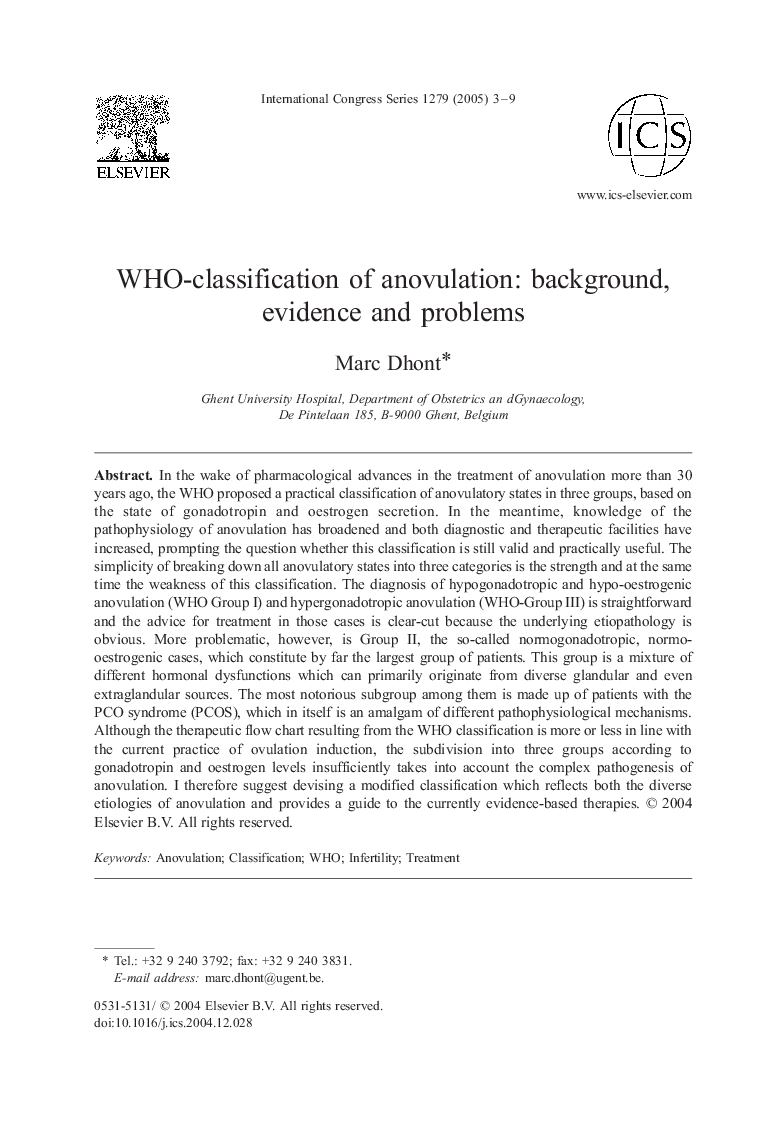| کد مقاله | کد نشریه | سال انتشار | مقاله انگلیسی | نسخه تمام متن |
|---|---|---|---|---|
| 9021909 | 1561378 | 2005 | 7 صفحه PDF | دانلود رایگان |
عنوان انگلیسی مقاله ISI
WHO-classification of anovulation: background, evidence and problems
دانلود مقاله + سفارش ترجمه
دانلود مقاله ISI انگلیسی
رایگان برای ایرانیان
کلمات کلیدی
موضوعات مرتبط
علوم زیستی و بیوفناوری
بیوشیمی، ژنتیک و زیست شناسی مولکولی
زیست شناسی مولکولی
پیش نمایش صفحه اول مقاله

چکیده انگلیسی
In the wake of pharmacological advances in the treatment of anovulation more than 30 years ago, the WHO proposed a practical classification of anovulatory states in three groups, based on the state of gonadotropin and oestrogen secretion. In the meantime, knowledge of the pathophysiology of anovulation has broadened and both diagnostic and therapeutic facilities have increased, prompting the question whether this classification is still valid and practically useful. The simplicity of breaking down all anovulatory states into three categories is the strength and at the same time the weakness of this classification. The diagnosis of hypogonadotropic and hypo-oestrogenic anovulation (WHO Group I) and hypergonadotropic anovulation (WHO-Group III) is straightforward and the advice for treatment in those cases is clear-cut because the underlying etiopathology is obvious. More problematic, however, is Group II, the so-called normogonadotropic, normo-oestrogenic cases, which constitute by far the largest group of patients. This group is a mixture of different hormonal dysfunctions which can primarily originate from diverse glandular and even extraglandular sources. The most notorious subgroup among them is made up of patients with the PCO syndrome (PCOS), which in itself is an amalgam of different pathophysiological mechanisms. Although the therapeutic flow chart resulting from the WHO classification is more or less in line with the current practice of ovulation induction, the subdivision into three groups according to gonadotropin and oestrogen levels insufficiently takes into account the complex pathogenesis of anovulation. I therefore suggest devising a modified classification which reflects both the diverse etiologies of anovulation and provides a guide to the currently evidence-based therapies.
ناشر
Database: Elsevier - ScienceDirect (ساینس دایرکت)
Journal: International Congress Series - Volume 1279, April 2005, Pages 3-9
Journal: International Congress Series - Volume 1279, April 2005, Pages 3-9
نویسندگان
Marc Dhont,